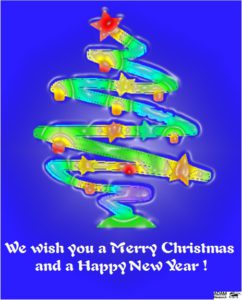Recently some evaluation users were asking whether Gerber files are required for fundamental heat spreading studies in a printed board. No, they aren't! TRM allows to created traces, planes and circles in the graphics window of the component table (youtube: Current Carring Capacity and IPC-2221) . Add the proper material and vertical position within the layer stack and all is done. Adding heat sources or currents is the same procedure. Drill areas can be blocks penetrating several layers parametrized by their effective conductivity. I did some experiments imitating the JEDEC-51 2s2ps test boards and it works (with assumptions).
Blog
TRM demo in web conference
Are you interested to learn about TRM in a web conference session?
Please let us know your favorite date.
An Overview for a Board Designer
In November 2014 Douglas Brooks from UltraCAD Inc. (Kirkland, WA) chose TRM to investigate some thermal issues that attracted him since years. Before that he couldn't find the right tool, precise enough and easy to use, to do it. Meanwhile he became an enthustiastic TRM user and reported about his new experience in many articles and a book.
Now his latest summary is available: "Exiting New Technology: Thermal Risk Maganagament." The PCB Design Magazine (Feb 2017).
Please read from here: Link
Solder by Numbers
Accidentally this week and last week I did some non-standard thermal simulations with through-hole pins by imitating hot solder solder wave underneath the PCB. Of course a mere thermal simualtion can only look at heat spreading in detail but cannot cover metallurgical or fabrication aspects. Nevertheless, the results gave a correct agreement of positions of the problematic pins (and those without problems) compared to the solder wave result. Among other effects it showed that local copper around a solder pin can help heat to flow toward the pin rather than flowing away from it. But all that depends on details of the layout in the bottom layer and maybe in other layers as well, the mass of the component, how the flux is dispensed and many more influencing parameters. A numerical investigation can help to reduce the number of prototypes.
Overdesigned Copper costs Money
Copper got more expensive. The price for a ton of copper was jumping from 4800$ to 5800 $ at London Metal Exchange end of october 2016.
Temperature simulations with TRM uncover paths how you can design printed boards more cost effective, tailored to specific environmental conditions and applications. Do you want to pay for surplus copper?
Around the Corner
Through the years, the impact of right-angle corners on printed circuit board (PCB) traces has been a hot topic. As early as the 1990s, some were arguing strongly against the use of 90˚ corners, using mitered corners instead. How do TRM simulations and experiments come together?
Read more in our collaboration: Thermal Effects around Right-Angle Trace Corners
Happy Electric New Year!
In the past I was asked several times about AC on boards and its consequences due to electro-magnetic induction. How does an alternating current change trace heating and how does it influence the traces around? Plenty of approximating formulae on skin and proximity effect for simplified geometries can be found in literature. For traces in boards it is better to solve Maxwell's equations directly.
Over Christmas and New Year there is some time to play with. A test code gives good results for classic test cases. What has to be done now is to define industrial use cases and to solve them.
Call for Action: If you work with AC in printed boards and want to contribute, please leave a message in the comment field below.
ADAM Research and partners wish you a happy holiday season and a new year filled with peace and prosperity

(This picture is simulated heat conduction by TRM with some artistic effects added in ppt.)
New web site of ADAM Research
The new new web site finally is adapted for smart phones.
Release TRM2.2.2
RELEASE TRM 2.2.2 (Nov 2016)
· Individual path to material library per user and extra long path names
· 2D preview of results during calculation
· Extensions in the Altium interface
For previous updates of TRM > History